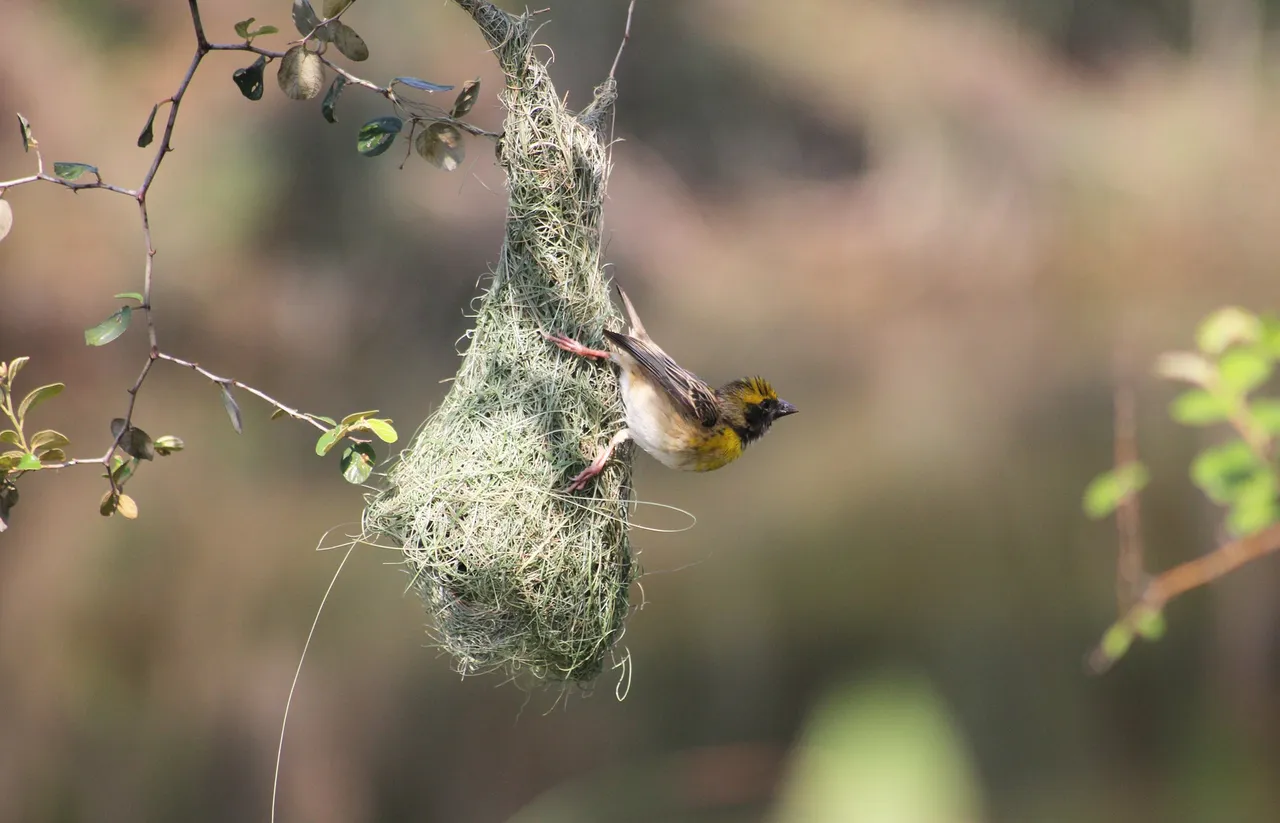
Hello fds,How are you?i am back after some days.i hope everybody are very well.i share a wonderful beauty about The King of Nest Building Bird || Baya Weaver Nesting, Engineer Bird, Baya Weaver Nests Making.

The baya weaver (Ploceus philippinus) is a weaverbird found across the Indian Subcontinent and Southeast Asia. Flocks of these birds are found in grasslands, cultivated areas, scrub and secondary growth and they are best known for their hanging retort shaped nests woven from leaves. These nest colonies are usually found on thorny trees or palm fronds and the nests are often built near water or hanging over water where predators cannot reach easily. They are widespread and common within their range but are prone to local, seasonal movements mainly in response to rain and food availability.
Baya weavers and their unique nesting nature were first recorded in Ain-i-Akbari, the 16th-century document recording the administration of Akbar’s empire, and which is part of the a much larger document, the Akbarnama. The Volume III translation by Colonel H. S. Jarret talks about wild/domesticated bayas: “The baya is like a wild sparrow but yellow. It is extremely intelligent, obedient and docile. It will take small coins from the hand and bring them to its master, and will come to a call from a long distance. Its nests are so ingeniously constructed as to defy the rivalry of clever artificers.”
These are sparrow-sized (15 cm) and in their non-breeding plumage, both males and females resemble female house sparrows. They have a stout conical bill and a short square tail. Non-breeding males and females look alike, dark brown streaked fulvous buff above, plain (unstreaked) whitish fulvous below, eyebrow long and buff coloured, bill is horn coloured and no mask. Breeding males have a bright yellow crown, dark brown mask, blackish brown bill, upper parts are dark brown streaked with yellow, with a yellow breast and cream buff below.
Baya weaver birds are small, sparrow-size birds which resemble the sparrows during the non-breeding season. During May-June, as the breeding season approaches, their gonads (sexual glands) become active and the adult males develop yellow and black color plumage on head, breast and throat; and their bills also darken. By the time the monsoon starts, the males are in bright yellow summer colors, and ready for breeding through the monsoon season (June-September).
Why do they breed during the summer monsoon?
Obviously, the grass is green during this side of the monsoon! Baya weavers forage in flocks for seeds on wild grass like these below, which are plenty after the monsoon rains. This is also the time when insects are plenty, especially to feed their young. How many bayas can you count in the image below?!
Nesting success?
Baya weaver nests are exclusively built by the males and then displayed to the females. What are the factors on which the female makes it selection? Among birds, elaborate nests and decorations built by males may help females to assess a male’s quality. One of the most popular architectural attributes of the weaver nest is the entrance tube, which can get as long as 90 cm. Female birds are also selective in choosing nests which provides safety (in terms of nest height and location). So what does the baya weaver base their selection on? Is it the architecture or the location?
Safer on thorny trees: Observation shows that the female weavers are inclined towards nests which are safely located in thorny trees, farther away from the trunk and situated high above the ground. Thornless trees have higher rates of snake predation than thorny trees. Nesting success also increases with with thickness of the supporting branch and for nests which are woven with fine fiber. Thick branches may stabilize nests during strong monsoon winds, and may also be less likely to break.
The King of Nest Building Bird || Baya Weaver Nesting || Engineer Bird || Baya Weaver Nests Making.i hope you like this post.this realy interesting bird in the world.

FOLLOW @cryptomaker @cryptomaker
VOTE FOR OUR GREAT WITNESSES TO THIS LINK
https://steemit.com/~witnesses
https://steemit.com/~witnesses
https://steemit.com/~witnesses
https://steemit.com/~witnesses






